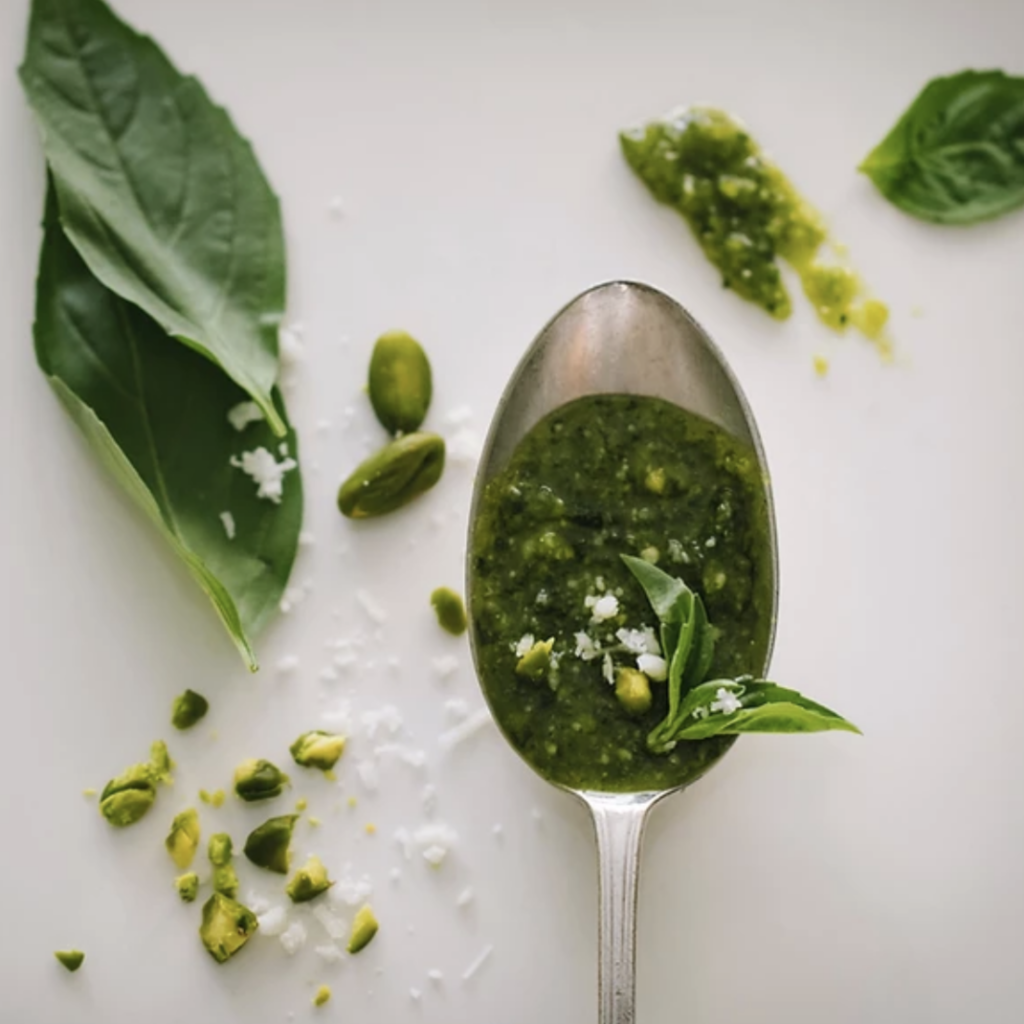PESTO is one of my favorite condiments! Not only can the ingredients support wellness, but the flavor is full bodied, and the recipe is widely versatile. (Ideas to use the pesto below the recipe!)
- Both olive oil and almonds have monounsaturated fats that support optimal heart health.
- Basil is a source of Vitamin K, manganese, iron, Vitamin A, and Vitamin C. It also contains calcium, magnesium, and omega-3 fatty acids. Some people extract the basil essential oil and use it for treating cuts, wounds, and skin infections.
- Spaghetti Squash has a neutral flavor. It can be swapped in for spaghetti as a lower calorie option, if interested. It can also provide hydration as compared to the wheat pasta as it is higher in water weight. For me, I find it to lighten up the entire dish as compared to wheat pasta.
- Also, this recipe is vegan, but I don’t recommend that everyone eat a vegan diet. It is just an option! If you eat cheese, I have that recipe below, too!

